There is a lot of myth and fear around a few creatures on this earth. Near the top of the list of scary and dangerous animals lies the black mamba and the black widow. Almost everyone knows about these two creatures and knows to stay far away. Although we know that these two predators can be dangerous, just how dangerous are they? Today, we are going to explore the black mamba vs the black widow: which is deadlier to humans?
Black Mamba vs Black Widow: Which Is Deadlier To Humans?
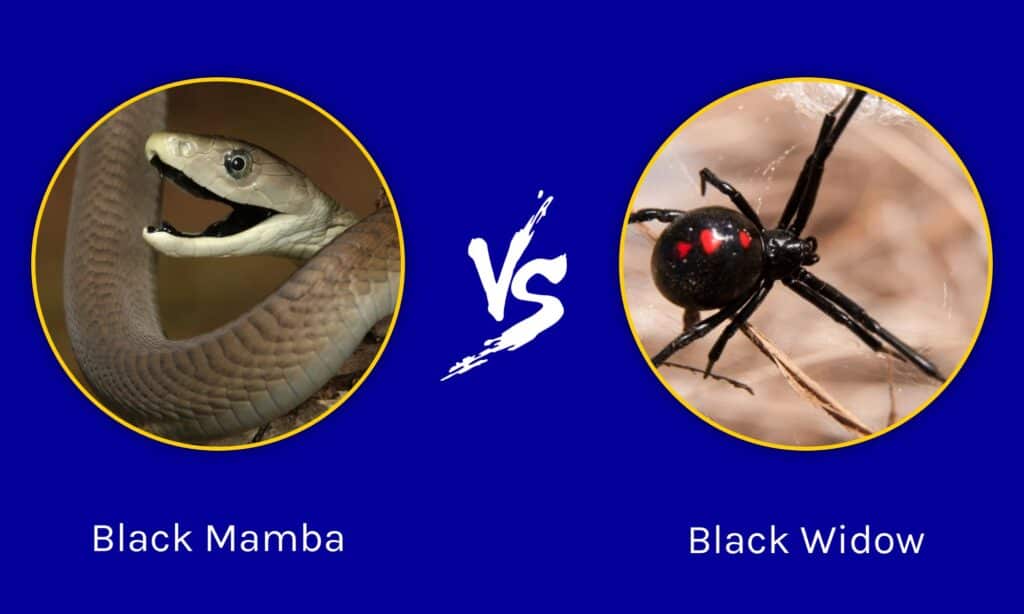
The black mamba is significantly more deadly to humans than the black widow is.
Although it may feel like these two creatures are comparable in their danger, it simply isn’t close. We can easily say that the black mamba is more of a threat to humans than black widows are for a few reasons. Let’s take a look at the data behind our assessment.
Black mambas are Africa’s longest venomous snake and are widely regarded as one of the most venomous snakes in the world. They are fast, bite thousands of people a year, and have an incredibly high fatality rate. In fact, black mambas have a nearly 100% fatality rate when left untreated. If you stumble upon a black mamba, the best thing you can do is run.
Black widows are famous in North America for their jet-black bodies and red hourglass pattern. They are considered to be the most venomous spider in North America, and bites are taken seriously. Thankfully, black widow bites rarely result in death, although medical treatment is usually needed to avoid further complications.
Which is Deadlier: Black Mamba vs Black Widow Venom?
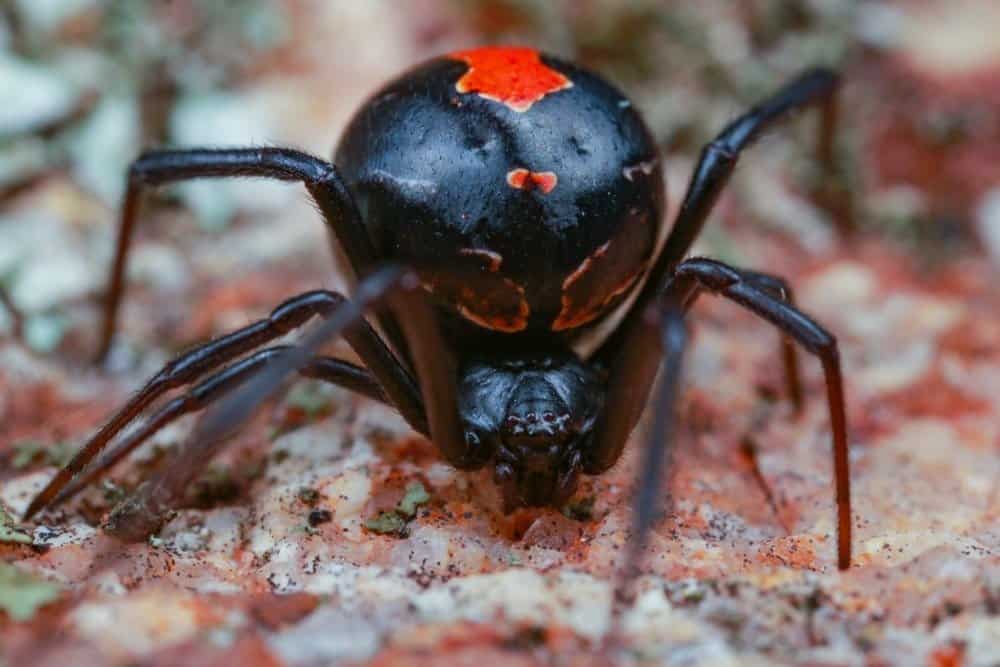
Black widow venom is 15 times more toxic than rattlesnake venom, but not more toxic than black mamba venom.
©Peter Yeeles/Shutterstock.com
Both creatures are, without a doubt, very dangerous to be bitten by. Still, there are some things that make the black mamba so much deadlier than a black widow. Both animals inject venom when they bite, and the danger of the bite can be split into two factors: how potent the venom is and how much was injected.
Black Mamba Venom
Black mambas are so dangerous because they have incredibly potent venom, and they inject enough to kill average-sized humans. The median lethal dose of a black mamba bite is 0.341 mg/kg. On average, black mambas inject 100-120 mg of venom per bite, with some snakes recorded as high as 400mg. When you do the math, it’s easy to see how most people die after getting a normal dosage of black mamba venom injected into their system.
Black Widow Venom
Black widow venom is incredibly dangerous as well. It utilizes alpha-latrotoxin, and the binding of α-latrotoxin to neuronal receptors releases acetylcholine, causing intense muscle contraction. Incredibly, the venom of a black widow is 15 times stronger than a rattlesnake. Thankfully, these little spiders can’t inject nearly as much as a snake can. Otherwise, we’d be in serious trouble. With so little venom being injected, almost all bites are non-fatal, and deaths usually occur only as a complication or infection.
What Happens When You are Bitten by a Black Mamba vs Black Widow?
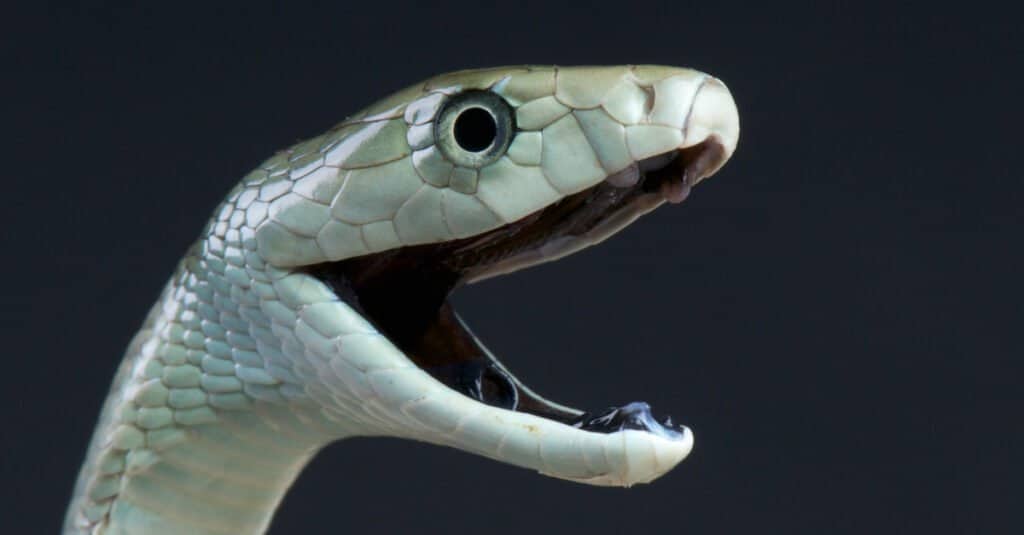
Most people die within 6 hours of being bit by a black mamba, while you likely won’t die from a black widow bite at all.
©reptiles4all/Shutterstock.com
When you are bitten by a black mamba and left untreated, your life is usually measured in hours. After first being bitten, you would feel intense pain around the bite area. Within 15-20 minutes, you will have likely lost the ability to talk and have begun losing mobility. After an hour, you probably aren’t conscious and are in some comatose state. If you still don’t receive treatment, you will likely be dead by hour 6.
Black widows are less deadly but can still cause some localized damage. When you are first bitten, it will be painful and sting. Soon, the bite will swell and become painful to the touch. Within 20-30 minutes, you may experience cramping, tremors, chest pain, and stomach pain. After a few hours, the severe effects will likely subside but can occasionally last for days. The localized pain of the bite will last for upwards of a week.
Where Do Black Mambas and Black Widows Live?
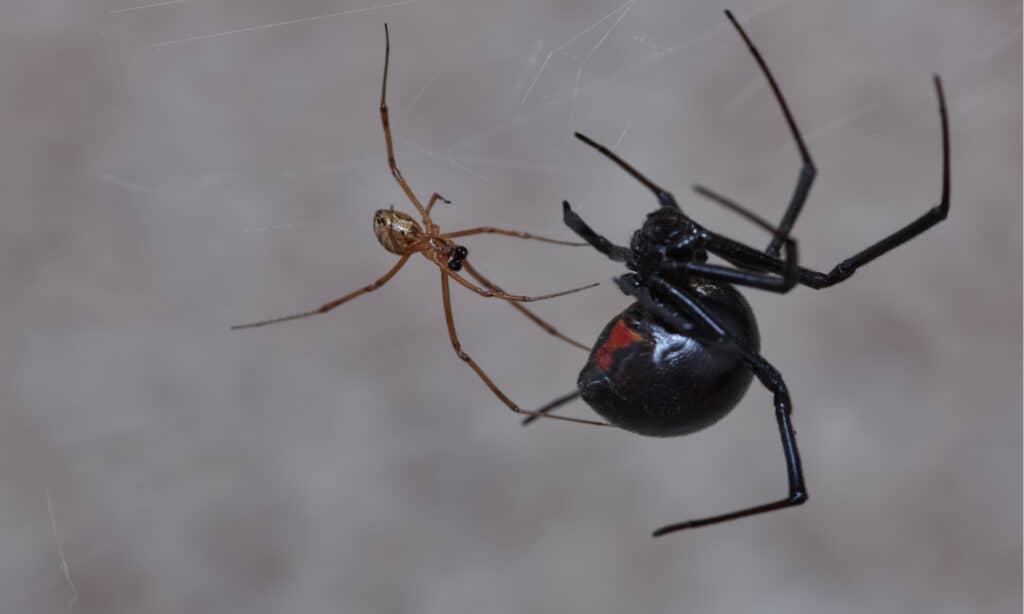
Black widows are often found in and around human establishments, while black mambas live in woodlands.
©lighTTrace Studio/Shutterstock.com
Black mambas are native to the continent of Africa. They can be found in the sub-Saharan regions of the continent, including Cameroon, Central African Republic, the Democratic Republic of the Congo, South Sudan, Ethiopia, Eritrea, Somalia, Kenya, Uganda, Tanzania, Burundi, Rwanda, Mozambique, Swaziland, Malawi, Zambia, Zimbabwe, Botswana, South Africa, Namibia, and Angola.
Black mambas are terrestrial and arboreal, meaning you can find them on the ground and in the trees. Their preferred habitats are the savannah, woodlands, rocky regions, and forests.
Black widows are much more distributed than the black mamba and can be found on all continents, save for Antarctica. They are multiple subspecies of black widows, and most residents of the United States are familiar with the western or southern black widow.
The most common places to find black widows are in dark, secluded areas. They can live in basements, outside near woodpiles, in garages, and more. Their relative prevalence contributes to their reputation and the number of bites per year.
Black Mamba vs Black Widow: Bites Per Year
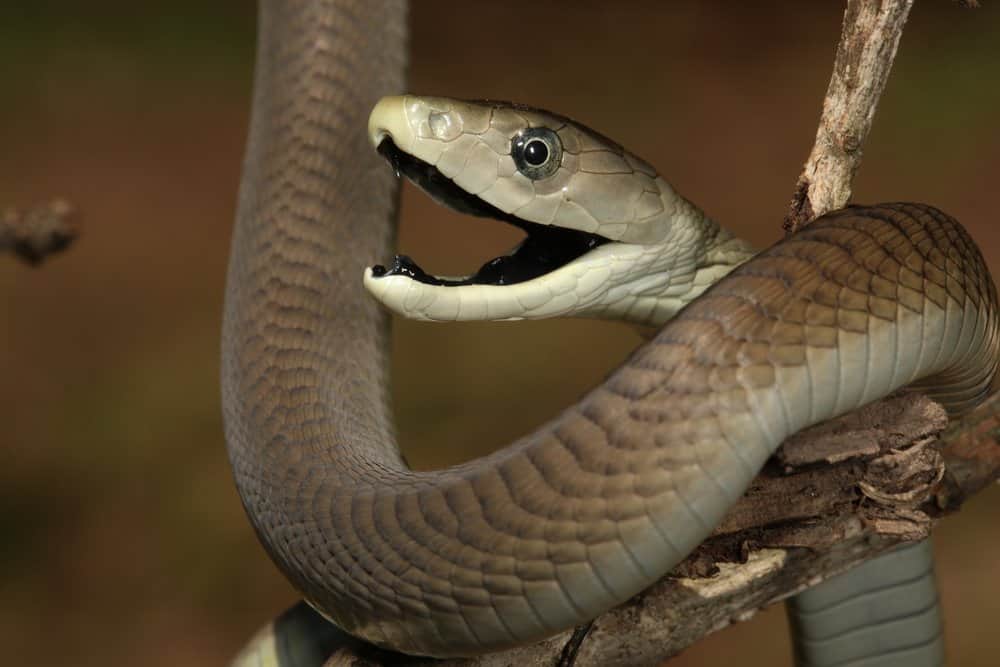
There isn’t accurate reporting on the number of black mamba bites each year.
©NickEvansKZN/Shutterstock.com
Due to the prevalence of black mambas across Africa and the minimal reporting across many countries, it’s quite hard to tell how many black mamba bites happen each year. Additionally, it’s difficult to tell how many deaths resulting from black mamba bites occur each year. The number that is often cited (20,000) is referring to all snake-related deaths across the continent, meaning that black mambas are some percentage of that number.
In North America specifically, the reporting is much more complete than across the entire continent of Africa. There are around 2,500 reported bites by a black widow in the United States each year, with a reported seven deaths.
The photo featured at the top of this post is © reptiles4all/Shutterstock.com
Discover the "Monster" Snake 5X Bigger than an Anaconda
Every day A-Z Animals sends out some of the most incredible facts in the world from our free newsletter. Want to discover the 10 most beautiful snakes in the world, a "snake island" where you're never more than 3 feet from danger, or a "monster" snake 5X larger than an anaconda? Then sign up right now and you'll start receiving our daily newsletter absolutely free.
Thank you for reading! Have some feedback for us? Contact the AZ Animals editorial team.







